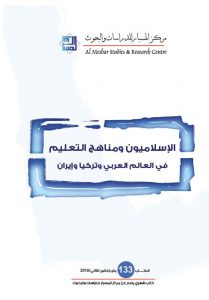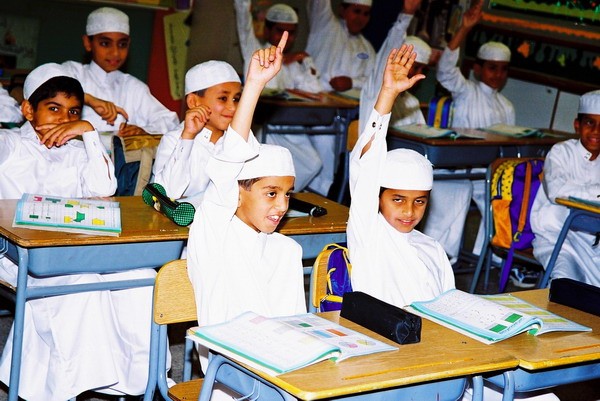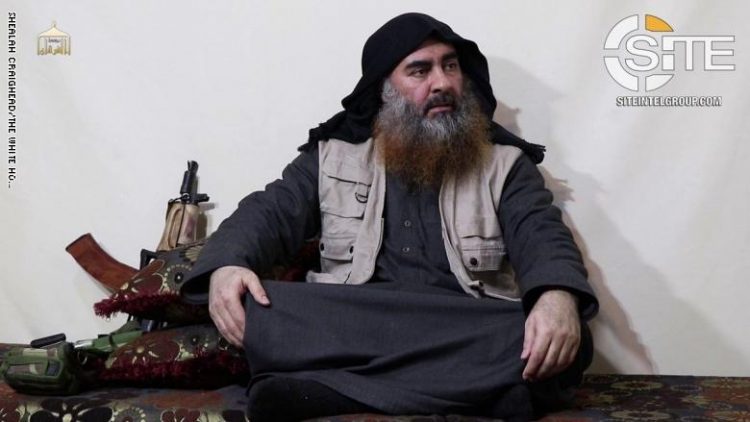
In addition to their involvement in politics, Islamists in many Arab and Muslim countries have achieved “social depth” by significantly influencing education systems and curricula — including religious education, civics, religious studies, and the Arabic language. Whereas positive educational development calls for developing critical approaches, critical thinking, and cognitive skills, Islamists have sought instead to instill the ideology of their movement by fostering an “exclusionary Islamist culture,” stigmatizing critical thinking, and spreading a political agenda.
Al Mesbar’s 133th monthly book — “Islamists and Education Curricula in the Arab World, Turkey, and Iran” — explores the pivotal role Islamists play in schools and universities. The chapters explore a number of Arab countries, as well as “education reforms” of the secular education system by the Islamist Justice and Development Party in Turkey since it came to power in 2002. It also addresses schools controlled by the preacher Fethullah Gülen, and compares educational curricula in Iran after the Iranian revolution in 1979. Finally, the book highlights the importance of bringing the values of nationalism and democracy to educational curricula in the Arab world as part of the struggle against extremism.
Through their extremist teachings, Islamists in education have provoked a range of social crises. In ethnically or religiously diverse environments, Islamists have worked to undermine adherents to belief systems other than their own. They have raised generations of students to believe that only all cultures and readings of religion besides theirs are illegitimate. Beyond their intervention in religious education and humanities studies, they also extend their influence into the teaching of biology, physics, and other scientific studies — as the book’s studies of Egypt and Turkey show. One of the studies concerning Turkey notes the dangers of “the hidden curriculum,” whereby the theory of evolution is displaced by the tenets of jihadism.
The Muslim Brotherhood’s role in Egypt’s schools represents the oldest case of Islamist intervention in an education system. Together with Salafis, the Brotherhood managed, long before the presidency of Mohammad Morsi, to establish profound influence within the Ministry of Education in addition to many individual schools and universities in the country. During their brief experience of control over Egypt’s government, they sought to more directly align school systems with their political project. This effort further eroded the presence of nationalist and pluralist values, to say nothing of democratic ones. The book goes on to discuss the role of Islamists at Al-Azhar Islamic university, which has seen fierce competition the traditional curricula of Al-Azhar on the one hand and Brotherhood and Salafi impositions on the other.
The situation in Jordan is no less alarming. Islamists have effectively controlled the education system since the 1950s. Is’haq Al Farhan, a leading Brotherhood figure, was appointed Minister of Education in 1970. The Brotherhood has also controlled the Directorate of Curricula, which oversees the production of curricula and school textbooks. In 2016 the monarchy sought to amend textbooks, with new curricula to promote civics education within a religious framework. The Brotherhood-affiliated Islamic Action Front fought against these measures, arguing that they violate the heritage and the values of the society. One Muslim Brotherhood figure said that amending the textbooks would constituted an attack on Islam.
The book also studies religious education curricula in Hezbollah’s schools. It finds that education serves as a tool for mobilization, averring a relationship between pupils’ sectarian identity and the movement’s political and military designs. It is a holistic approach, transcending religious education to include technology, laboratories, and a range of extracurricular activities.
The situation in Saudi Arabia is also examined in the book. Muslim Brotherhood figures who came from Egypt managed to compete with the regime for dominance over religious-educational institutions. The phenomenon dates back to the establishment of the Islamic University of Madinah in 1961, in which the Brotherhood played a major role. Over time, Brotherhood influence expanded into King Abdelaziz University, Umm Al-Qura University, and other institutions.
Religious educational institutions in Tunisia have witnessed considerable friction between secularists and Islamists. The book traces the contours of this conflict as well.
As to the situation in Turkey, the Islamist authors of new education curricula for primary and secondary schools have worked to instill an ethic of submissiveness and a mood of fatalism, and grafted ideologized memories of the Ottoman empire onto a revised, jingoistic Turkish nationalism. The book’s examination of the education strategy of Fethullah Gülen’s schools provides a case in point of the institutions of a “parallel state” — at that, a resilient network of institutions that managed to survived a security crackdown on Gulen’s movement by the Erdogan government.
The book’s treatment of Iran shows how after 1979, the new Islamist revolutionary government reworked the philosophical tenets underpinning all educational institutions, seeking both to “Islamize” them and align them with government policy. The book also explores Islamist educational impositions in Malaysian universities, as well as threats to pluralism in Europe arising from Islamist impositions on its schools.
Finally, a study titled “The Challenge of Bringing Nationalist and Democratic Values to Arab Education Systems” notes the paradox that Islamists, while sometimes adopting the language of democracy, have eroded the ideals that a democratic system requires. The study explores some of the challenges that would need to be met in order to bring such values into Arab classrooms.
The center would like to thank all the researchers who contributed to this book, especially Dr. Rita Faraj, who coordinated its publication.










